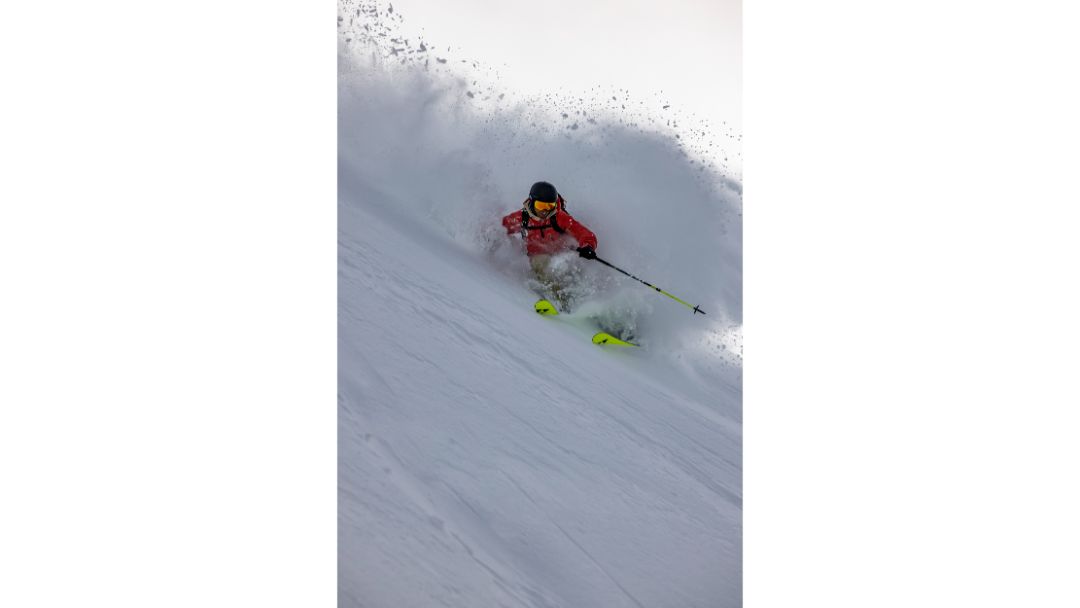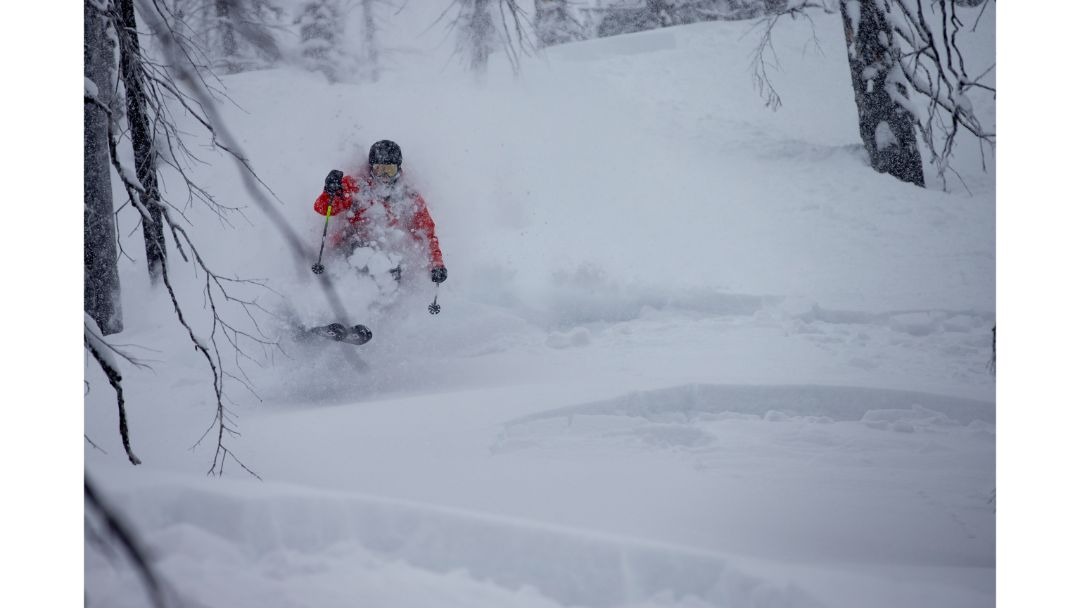
This is the condition Powder skis were made for. If only we could use them every day…
As I was dismounting my soapbox last week, I was on the brink of revealing a major reason why mainstream ski suppliers have a hard time making a nickel in the Powder genre (skis over 113mm in waist width). To review, the first problem threatening the commercial viability of these super-fat models is that it only takes a couple of low-snow years to stop the flow of inventory. As a second or third pair of skis, Powder skis tend to sit idle for long stretches, so their owners are inclined to hold onto them, well, forever. When consumers stop buying, so do retailers, creating a clog in the pipeline that suppliers can only liquidate over time.
But difficulty maintaining margins is only part of the problem. There’s another major factor crippling retail Powder ski sales: competition from a horde of indie brands that specialize in wide and über-wide skis largely because they lack the technical capacity to make good hard-snow skis. This is another ski market Americans don’t see, as only a handful of small-batch producers even attempt the delicate balancing act of selling to retailers while simultaneously selling against them.
If there were only 5 or 6 alternative brands selling primarily Powder and Big Mountain models directly to consumers, they would leave a dent in the majors’ forecasts. But that’s not the situation. Instead, there are 5 or 6 indies that might even make the break to relevance, as Line did once upon a time. And trailing right behind them is wave after wave of wannabes, many of them capable of reaching a likely break-even point of 2,000 pairs annually that can keep them above the water line of insolvency.
If this were a Disney movie, everyone in the audience would be pulling for the scrappy underdog who by dint of his own industry has brought forth a new ski line into the world. I hope I’m not crushing any cherished childhood dreams by revealing that reality isn’t like a Disney movie, even one on Disney Plus. The hard facts are that maintaining quality control in small batches is difficult, and doing so with antiquated machinery is nearly impossible.
Powder skis represent one of the easier points of entry for a small ski-maker as the only metal in them will be the edges. (You can put 2 sheets of .4mm Titanal in a Powder ski, but not all skiers are going to appreciate the gesture.) The problem the small ski-maker will have is adhering the metal to the rest of the structure. Better to leave it out rather than face a ruinous defect rate.
The way around wanting to make a ski but not being very good at it in practice is to pay someone else to make it for you, someone who can afford the essential machinery needed to manufacture a reproduceable product. This has been a successful path trod by several mid-size indies all the way to the big time, and a few others that have stabilized at a profitable level. Going this route somewhat rinses out the artisanal quality associated with indie brands, but this is more blessing than curse in most cases.
Somewhere along the route between anonymity and success, a ski brand has to decide if it has the stomach for dealing with the retail channel, or are better off staying strictly B-2-C. This isn’t exactly an either/or situation, as I don’t believe in the tooth fairy and I don’t believe there are any indie ski makers who don’t need direct sales to survive, whether they have a presence at retail or not. But the choice to set up wholesale distribution presents a tipping point between merely surviving and becoming a real brand with a national network of brick-and-mortar touch points.
At Realskiers.com, we deem the intent to help support the specialty retail channel to be a prerequisite for our involvement with any indie brand. Our reasoning is simple: for Alpine skiing to survive as a sport (not just an activity), the hands-on services of an experienced bootfitter are essential. For bootfitters to survive, the establishments where they toil need to prosper, which they are unlikely to do on fitting fees and retail margins hammered flat by the Internet.
All skiers need this person-to-person attention, not just the elite who have endured our sport’s streamlined, 20-year learning curve. As a sport, not just an “industry,” we need specialty retailing to survive. If an indie’s business plan doesn’t support the specialty retail channel, they’re off my Christmas card list.
I’m not advocating applying any single, super-tricked-out solution that can only be applied in person, and I’m suspicious of anyone’s homegrown “fitting system.” But I know from years of experience that skiers rarely arrive at the right destination without informed assistance. This guidance has to be hands-on, literally. Attempts to do proper bootfitting at a distance are folly, pure and simple. This includes the counsel of every customer service operator and every self-accredited, online “assistant” who leads poor, unsuspecting skiers down the Road of Stupidity to the Destination of Despair.
I ignited this rant about specialty retailing to illustrate one reason the major players have a hard time selling Powder skis: indie brands siphon off a huge percentage of the total market for fat skis. The indies are well deserving of their cut, as they helped create the market segments they continue to serve. While not all indies are innovators, those who are help propel our sport in a positive direction and contribute to its overall health.
While from season to season the Alpine ski market may seem relatively stable, in fact the fortunes of all brands have risen and fallen with the regularity of the tide. At one time, the major brands of today were start-ups with names like Fischer, Rossignol, Dynastar, Völkl and Head. There’s no point in singling out any one brand’s history as especially instructive, as all have known lofty heights and dreary downturns.
Because all brands are in some phase of the rollercoaster ride, the boundary between the major brands and the bit players is fluid. As you read this, some erstwhile important brands are slipping back towards the pack, creating opportunity for indies to move up the ranks.
But we live in uncertain times, which reduces the overall appetite for risk. Retailers need dependable suppliers, which tilts the playing field back in favor of the establishment. Last season was catastrophically bad in the Alps, laying waste to all pre-pandemic forecasts. No supplier escaped its effects. One more season like the last would most likely have profound effects on what brands survive and which ones succumb.
In the meantime, all suppliers and the ski shops who carry their goods, large and small, are obliged to focus on fundamentals, which is why there will continue to be great skis made that Americans will never see.

There’s nothing quite like having the right ski in the right conditions on the right day. Trifecta!

